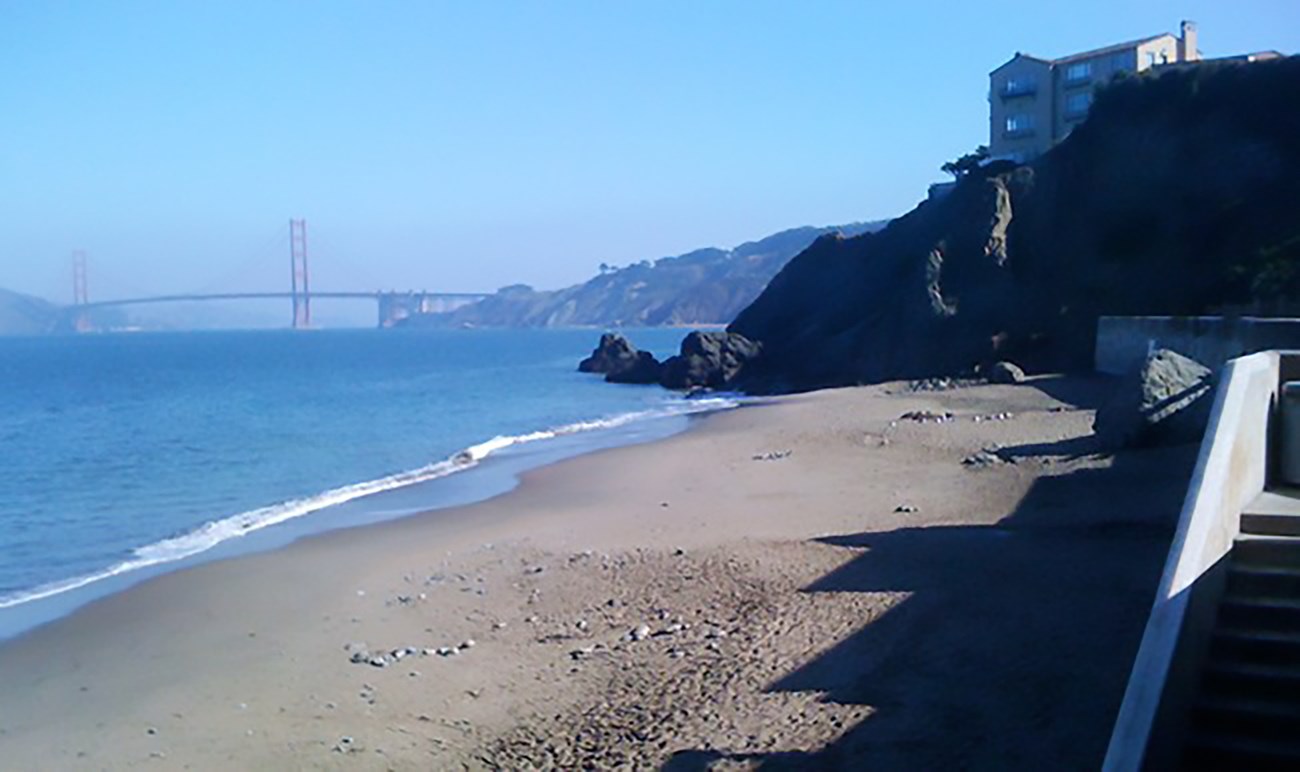
China Beach, a small, sandy cove between Lands End and Baker Beach in San Francisco’s Sea Cliff neighborhood, is used today as a public recreation area that offers spectacular views of the Marin Headlands and Golden Gate. Local legend states that the beach was once used as a camp for Chinese fisherman who may have anchored their fishing boats in the harbor in the 1800s. 
Anti-Chinese sentiment"The Chinese must go." Chinese immigrants began arriving in California in 1849. They called it “Gum San” or Gold Mountain and joined other immigrants in pursuit of riches in California’s Gold Rush. The Chinese quickly became targets of discrimination and resentment because of their willingness to work for low wages. Their Asian appearance and dress made them easy targets.More than any other group, Chinese immigrants faced discriminatory laws that began as early as 1850 with the passing of the Foreign Miners’ License law. It imposed a $20-a-month tax on all foreign-born miners. Although the tax was repealed the next year, the message it sent was echoed in a string of discriminatory regulations passed during the following century, including a ban on wearing the traditional queue (braided ponytail), prohibiting businesses from hiring Chinese workers, not allowing Chinese to be naturalized, prohibiting aliens from fishing, and forbidding the immigration of Chinese into the United States. Anti-Chinese clubs were established, and political candidates promoted anti-Asian platforms. One of these was San Francisco Mayor James D. Phelan. Ironically, what is now China Beach was called “Phelan Beach” when the State bought the beach in 1933 with the help of a $50,000 gift from the former mayor. Today the National Park Service has restored the name China Beach, as an acknowledgement of the turbulent history of Chinese immigrants in the San Francisco Bay. 
Chinese FishermenChinese immigrants began arriving in California in 1849. They called it “Gum San” or Gold Mountain and joined other immigrants in pursuit of riches in California’s Gold Rush. After the Foreign Miners Tax of 1850 forced many Chinese out of the goldfields, they returned to the San Francisco Bay and became fishermen. Their main catch was shrimp, but they also took sturgeon, smelt, herring, abalone, and crab.By 1875 there were 25 Chinese shrimp camps along the shores of San Francisco Bay. We do not know how these men used China Beach. It would have made a poor shrimp camp as the foggy weather would have made it difficult for shrimp to dry. The beach may have been an abalone gathering spot or a safe landing spot just outside of the Golden Gate. Chinese made up 50% of all fishing crews in the San Francisco Bay Area in the 1880s. Threatened by their success, non-Chinese fishermen relied on Anti-Chinese laws and discriminatory tactics to force their Chinese rivals out of the industry. By the 1890s, only 20% of Bay fishers were Chinese, and the number continued to decrease through the rest of the century. 
China Beach Bivouac AreaBetween 1943 and 1946 the US Army acquired 1.062 acres on China Beach to use as a bivouac (temporary encampment) area for the troops of the 6th Army. The beach is now part of the Golden Gate National Recreation Area. No records have been found that describe the Army’s activities at the site.
Beach House at China BeachOn August 14, 1954, a new beach house was formally opened at China Beach, at the time called James D. Phelan State Park. The $140,000 beach house, funded by a city recreation bond issue approved by voters in 1947, included a lobby, check room, office, first aid station, men’s and women’s locker and shower rooms, lifeguard room, refreshment stand and rooftop observation deck. |
Last updated: May 12, 2022
